The Mythical Bakeneko
Bakeneko has sometimes been translated as "Monster Cat" or "Ghost Cat", but the best definition in English may simply be "Changing Cat". The mythological Bakeneko are yōkai (supernatural creatures) that allegedly begin as regular domestic cats. Legends say that as cats get older, they change. The process starts with them walking on their hind legs, although with time the cats gain more powers and grow larger (even to the size of a human), they then have the ability to change their forms and sometimes peak human languages.
Stories about Bakeneko suggest that the favorite form to shift into for these devious cats is their owners or other humans. This change reportedly makes the cats so happy that they put napkins on their heads and dance.
Other powers of the mythical Bakeneko include: summoning fireballs, their tails acting as torches to set fires, controlling the dead, and cursing (or killing) their previous owners, if they see fit.
The Bakeneko's Eviler Cousin - The Nekomata
The Nekomata are essentially powered up Bakeneko. Legends of Nekomata begin in a similar way to the Bakeneko - with a domestic cat standing on its hind legs. However, Nekomata are the oldest and largest cats and have longer tails than Bakeneko. They are said to have two identical tails after their change, enabling them to create double the trouble.
It is believed that more Nekomata can speak human languages than the Bakeneko and that they use this ability to create extra havoc in human lives. While legends show that not all Bakeneko are nefarious, all Nekomata are thought to be. The Nekomata are said to find great pleasure in creating chaos and are thought to be responsible for large fires and blackmailing or enslaving humans.
Legends place the homes of Nekomata in mountains, where they often are said to appear as large wildcats and live in small packs. If a human comes into the dwelling of the Nekomata, folklore states that they will almost certainly be killed for trespassing.
Understandable Origins for Monster Cats
As with many mythical creatures, the origins may in reality be quite ordinary for the Bakeneko and Nekomata. Some scholars say that the legends began as cats were licking oil from lamps that were fueled by fish oil. The appearance of a cat on its hind legs with shining, anticipatory eyes understandably shocked and unnerved some of the folks who saw it and the myth arose soon after. As cats did not arrive into Japan until the reign of the Emperor Ichigo (986-1011 AD) during the Edo period, their particular ways were not well-known at the time of the emergence of many of the stories.
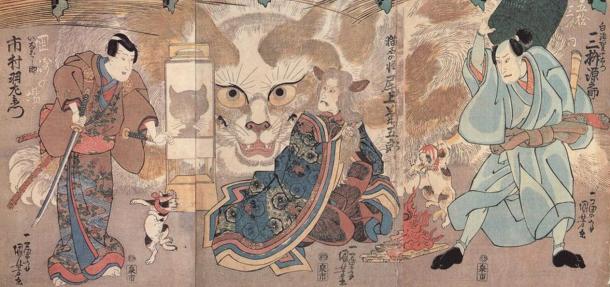
With the strange or exceptional characteristic cats tend to have, it is not surprising that the stories of Bakeneko and Nekomata also took hold and the mythical world was enhanced with their legendary stories.
Cat Prostitutes Strike Fear
One of the most famous Japanese legends is about the Bakeneko Prostitutes of Edo (the former name of Tokyo). There are many of these stories, but all share a common thread. Often the client of the prostitute falls asleep only to awaken to see the beautiful woman picking at fish bones or other seafood while she has a cat head or shadow.
Other versions have the cat shadow appear when the man sees a beautiful prostitute casting the shadow as she approaches him on the street. Regardless of the beginning, the legends continue with the man being terrified that he is in the presence of a Bakeneko and escaping (if possible). Sometimes the stories go further as the Bakeneko pounces on her victim and kills him.
The mysterious Bakeneko prostitutes apparently rose as an urban legend from the case of a Bakeneko that was supposedly "working as a meshimori onna, a type of low-rent waitress/maid/prostitute, at the Ise Inn in the Shinagawa-juku area of Edo, one of the fifty-three stations of the Tōkaidō sea highway" in the late 1700s.
There is a belief that the Bakeneko prostitute image began as it was not acceptable for prostitutes to eat in front of their customers so they hunched over their stolen meals as the client slept. When the man awoke he may have seen her in a distorted way (especially after the night of drinking he had). Perhaps unexpectedly, the fad of cat-girls remains prominent in modern Japanese manga, anime, and video games today.
The Vampire Cat of Nabéshima
Another popular tale about a Nekomata involves the Changing Cat, a prince, a geisha, and a soldier. The story begins with the Nekomata watching the favorite geisha return to her room after a night with the prince. It waited until she was asleep then crept in, pounced on the sleeping geisha, and strangled her. The cat then dragged the body outside where it buried the unfortunate woman under some flowers. Following the murder, the Nekomata transformed into the geisha's form.
Each night the Nekomata went to visit the prince, just as the geisha had before it. However, when the prince fell asleep the Nekomata would drink his blood. These encounters led the prince to complain of horrible dreams as he gradually became weaker and weaker.
No doctors were able to identify the prince's ailment so they ordered soldiers to watch the prince around the clock. Oddly enough, around midnight every night the soldiers became uncontrollably weary and fell asleep - leaving the opportunity for the Nekomata to continue its visits. But one night things changed.
A young soldier came to the castle to offer to help the prince. The soldier purified himself in the fountain and prayed to an icon of Buddha for several hours. A Buddhist priest saw the young man's dedication and asked if he would like to watch over the prince at night. He then warned the soldier that there was a problem as all the soldiers fell asleep around midnight. The soldier accepted the offer and told the priest not to worry - he knew a surefire way to stay awake.
Close to midnight that night, without fail, the soldiers began to nod off, one by one. Even the young soldier stifled a yawn. But then, he drew his knife and stabbed himself in the leg. Each time he began to grow weary he turned the blade and became alert again.
With the arrival of midnight came the beautiful geisha. She slid open the door and crept towards the sleeping prince's bed. The young soldier stood up and raised his knife. The geisha flashed her yellow eyes at the soldier then left as quietly as she entered. The same thing happened for the next four nights.
The soldier was certain the geisha with yellow eyes was at fault for the prince's illness and tried to warn him. But even as his health returned, the prince refused to hear the soldier's complaint against his favorite lover. Thus, the young soldier made a plan to kill the suspicious geisha himself.
The young soldier met the geisha one night at her room (with eight of his companions hiding behind him). When she answered her door the soldier saw her yellow eyes flash again. He handed her a folded piece of paper and asked her to read it. Then, with the geisha's attention preoccupied, he pulled out his knife and tried to stab her. The geisha fought back and the rest of the soldiers advanced. In an instant the Nekomata returned to its cat form and sprang away from its attackers. It then raced off into the night.
The next day the soldier told the prince of the previous night's events and a search began for the real geisha's body. When it was discovered by the gardener the prince was beyond comfort and ordered his soldiers to find and kill the Nekomata that took his beloved's life. The young soldier found the Nekomata and enacted the prince's revenge.
A Redeeming Story for People Who Care for their Cats
The myths of the Bakeneko show that not all of the creatures are created equal. There are also short stories that involve Bakeneko helping individuals that cared for them when they were regular cats. Normally these stories involve one person (a maid or grandson for example) being kind to a cat while another person with more authority (i.e. the mistress of the house or grandfather) is cruel.
In these stories the cat eventually becomes a Bakeneko and by chance meets with its benefactor. The benefactor of the story is often seeking shelter in a house on a mountain or island (where the Nekomata tend to live as well).
When the Bakeneko sees its old friend it warns him/her that he/she must leave because the person has stumbled upon a place "where the cats gather". The Bakeneko also sometimes identifies itself as it provides the individual with a token that will help in its escape.
If, by chance, the person who maltreated the cat also appears in the Bakeneko's future, he/she will be killed by the Bakeneko as revenge. Undoubtedly the message here is to take care of your pets!
Cool Cats in Japan
Despite the terrifying legends of the Bakeneko and Nekomata, cats are not hated across Japan. They have played an important part in Japanese culture in many ways. For example, one of the other iconic images of cats is the Maneki Neko (welcoming or beckoning cat). The Maneki Neko is often seen sitting at the entrance of shops with one raised paw. This cat has been a symbol of luck and happiness since the Edo period as well.
Art depicting cats was also a common feature in the Edo period, with the artists Hiroshige Utagawa and Kuniyoshi Utagawa at the forefront of the movement. During the Meiji period (1868-1912, the novelist Soseki Natsume continued the cat trend with the novel I Am a Cat, which became a famous piece of Japanese literature. The popularity of cats continues in today's culture via Hello Kitty, a cute feline that sits in the home of many families with young girls.
But even more dramatic then the fame of the anthropomorphic cat, are the celebrated "Cat Islands". Tashirojima Island is one island that is found in Ishinomaki City, east of Sendai City. There is even a cat shrine (Neko-jinja) for the feline inhabitants at this site.
If that is not enough, another cat island exists in the Aoshima Island in Shikoku area. This island has also been called a "cat paradise". Aoshima island supposedly has 15 human residents and 100 cats and has become a popular tourist spot. The amazing hold of cats on Japanese culture is undoubtedly prominent throughout history. Be it a positive or negative light they are cast in; cats have certainly made an impact.
References
Hagin Mayer, F. (1986) The Yanagita Kunio Guide to the Japanese Folk Tale. Indiana University Press.
Japan Monthly Web Magazine. (2014) "Japanese people and cats in good harmony."
LA Vocelle (2013). History of the Cat in the Dark Ages (Part 10).
Redesdale. (1910) Tales of Old Japan. MacMillan & Co., London.
Roberts. J. (2010). Japanese Mythology A-Z. Second Ed. Chelsea House, New York.
Tse, H. (2013) 5 Interesting Facts About Fortune Cats (Maneki Neko).
Von Krenner, W. & Jeremiah, K. (2015) Creatures Real and Imaginary in Chinese and Japanese Art. McFarland & Co., North Carolina.
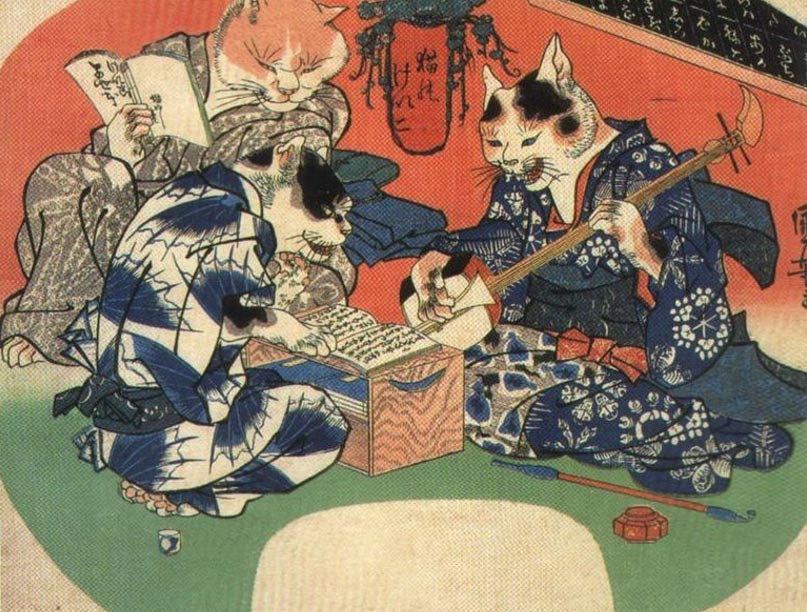
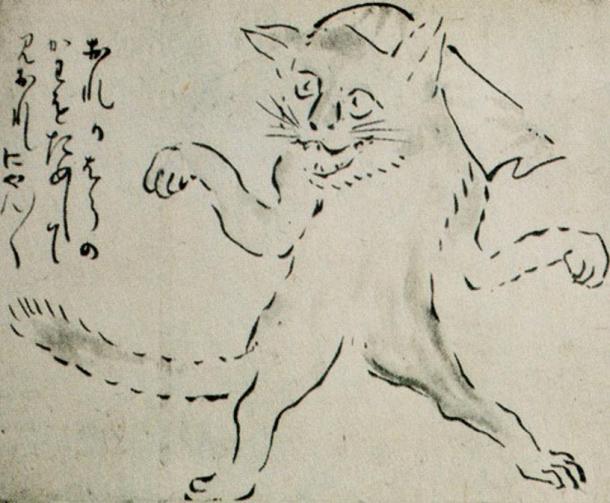
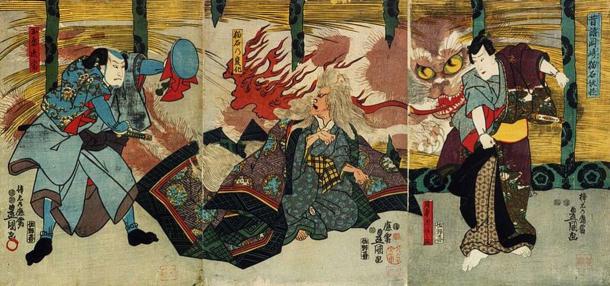
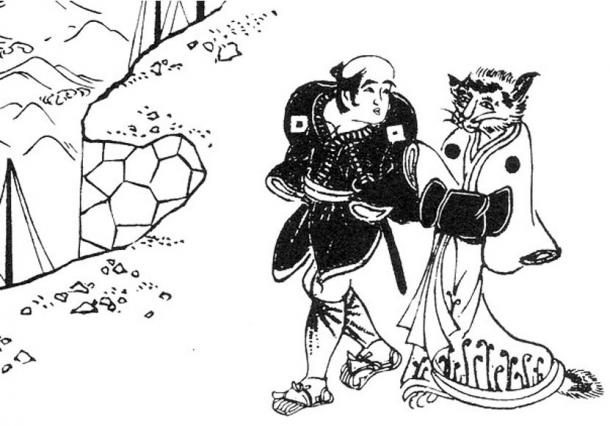
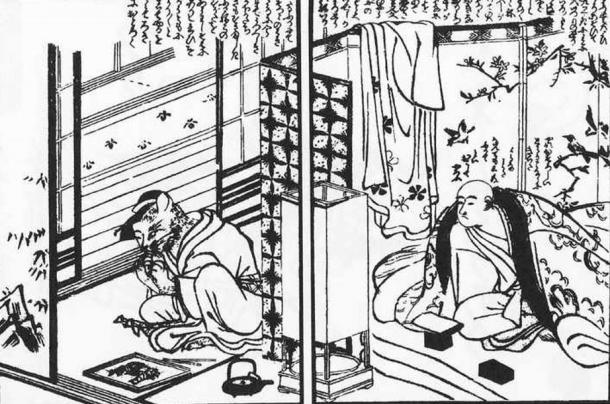
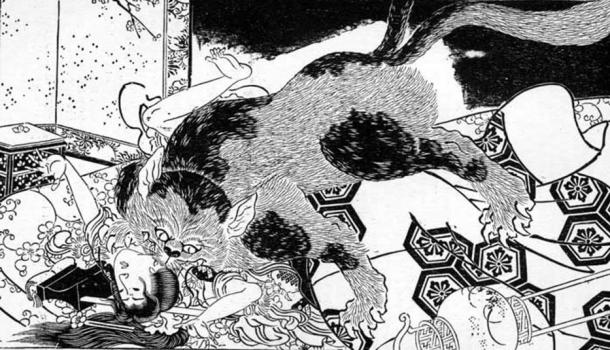
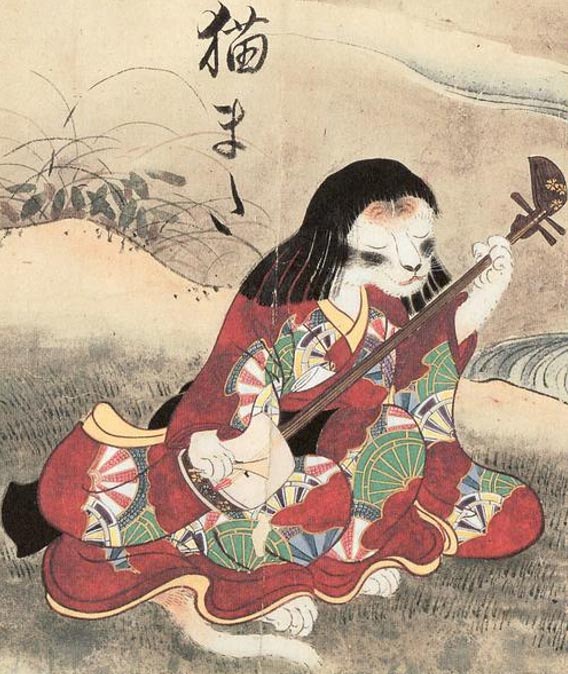
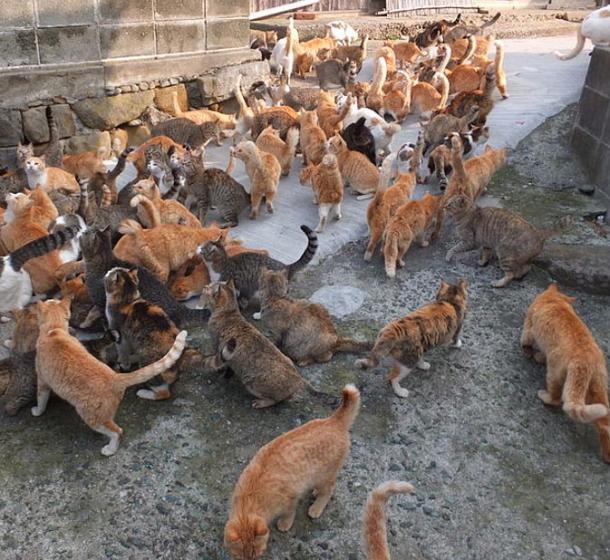



Reader Comments
to our Newsletter